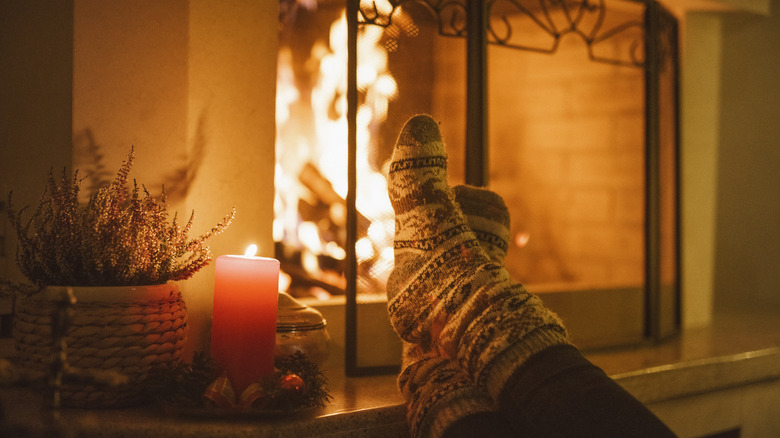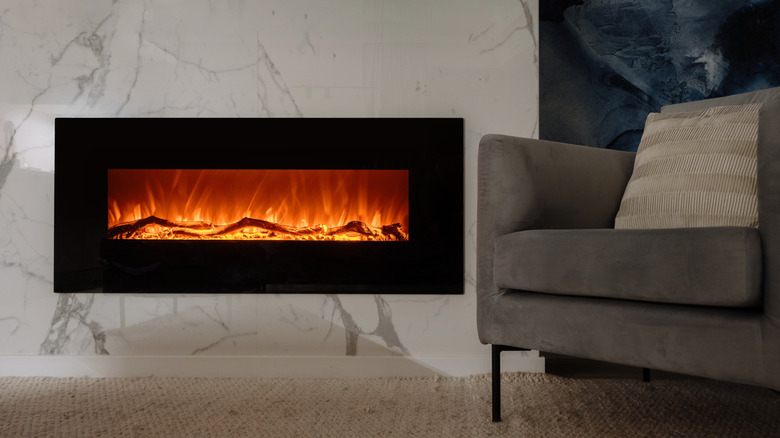Hidden Downsides To Traditional Fireplaces You Should Know About
Fireplaces have a magical way of making us feel cozy and nostalgic. Imagine a cold winter night with the crackling sound of logs, a warm blanket, and a mug of hot cocoa. It's an image straight out of a postcard. But there are many things to keep in mind before adding a fireplace to your home. They are not just wood-burning wonders but also sneaky culprits of inefficiency and hidden hazards. For starters, a wood-burning fireplace has a net cooling effect on a home. Add to that the not-so-pleasant reality of how they can mess with indoor air quality, and suddenly, they don't seem quite picture-perfect.
Traditional wood-burning fireplaces are surprisingly bad at heating your home. When you light a fire, it creates a vacuum that sucks warm air from the rest of your house. In the meantime, cold air sneaks in through gaps or cracks in your doors and windows to replace it. So, instead of making your home warmer, it can make it colder. This inefficiency means you might crank up your thermostat to compensate, leading to higher energy bills.
Then there's the issue of indoor air quality, which is where things get smoky — literally. Wood-burning fireplaces release fine particles and pollutants into the air, which can be a real lung problem. Even if you don't see a room filled with smoke, tiny particles can still sneak in and hang around, especially if the chimney isn't in perfect condition. Breathing in those pollutants over time can irritate your respiratory system. If improving your home's air quality is the goal, then just leave the fireplace for aesthetics.
Alternatives to traditional fireplaces you should consider
If reading about those downsides has you reconsidering adding a fireplace to your space, there are modern alternatives that can give you a cozy vibe without all the hassle. First up are electric fireplaces. These plug-and-play wonders offer heat, ambiance, and zero smoke. They are easy to install and don't require a chimney or vent. Plus, you can control an electric fireplace with a remote, so you don't have to leave your comfy couch.
For those after something a little closer to the real deal, gas stoves offer a fantastic alternative. These fireplaces run on natural gas or propane, providing consistent, controllable heat with just the flick of a switch. They don't produce smoke or ash, which means cleaner air and fewer messes to clean up. Further, they are more efficient than traditional wood-burning fireplaces because there's no chimney for heat to escape through.
Pellet stoves are worth considering if you crave the wood-burning experience but want a more eco-friendly option. These stoves burn compressed wood pellets, producing far less smoke than traditional logs. Pellet stoves are highly efficient and can heat large areas of your home without the energy-wasting habits of a standard fireplace. They also come with automated feeding systems, so you don't have to reload the fire constantly. Pellet stoves strike a great balance between tradition and modern convenience if you're looking for a cleaner way to enjoy a cozy fire.

